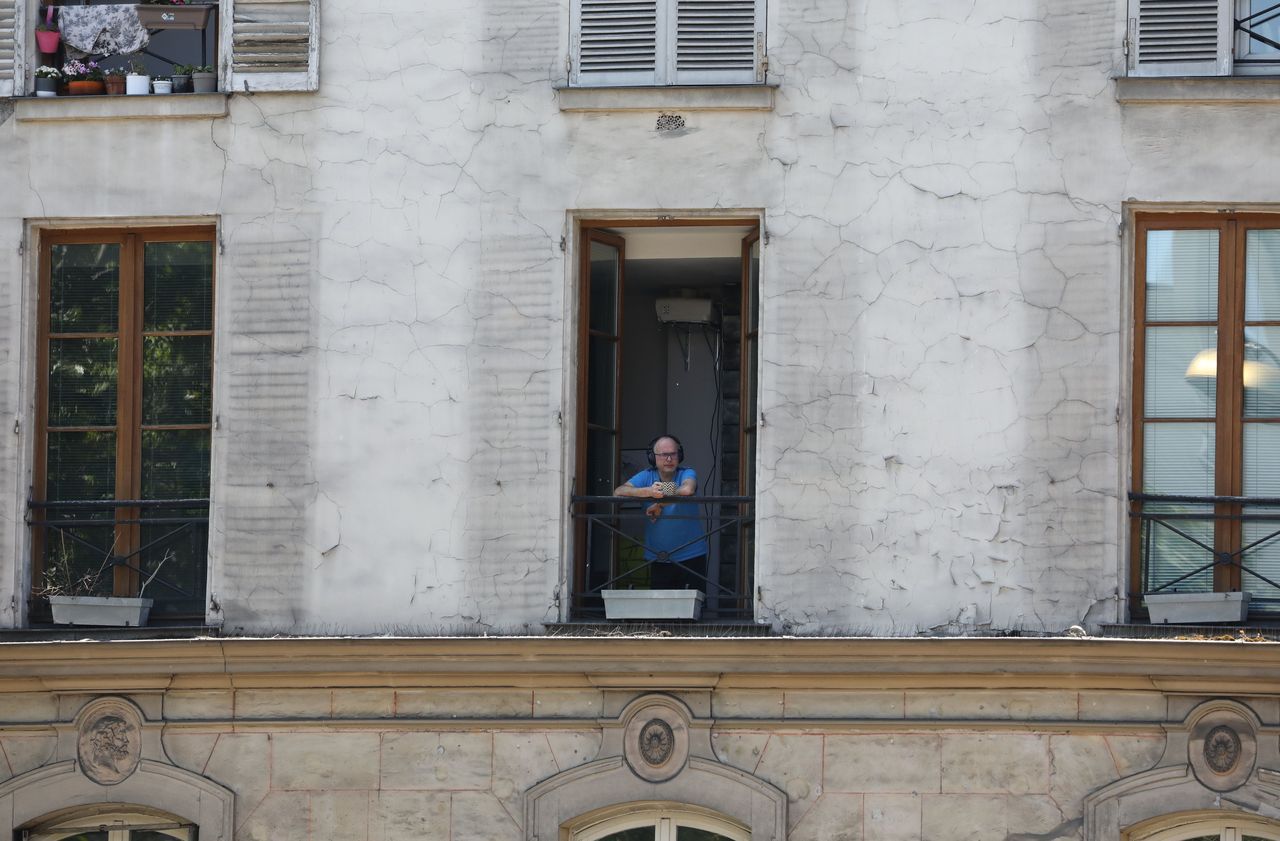Wash your hands, sneeze into your elbow, do not kiss or shake hands ... After months of pandemic, the French know by heart the famous "barrier gestures" which, with the wearing of the mask and the respect of the social distancing, are presented as the main weapons against Covid, pending a vaccine.
However, this message of prevention, hammered out by the health authorities, has not at this stage made it possible to halt the epidemic rebound.
From there to considering ourselves as undisciplined, there is a step that should perhaps not be taken too quickly: and if we had simply not sufficiently integrated a path of contamination whose importance science is gradually recognizing, that by aerosol?
Today, scientists are indeed inviting as many people as possible to ventilate public and private places as much as possible.
Aerosols taken more and more seriously
It took a long time to understand that the virus was not transmitted only by droplets projected by humans.
But the outlook on the virus seems to be changing little by little.
At the start of the summer, some 239 scientists from around the world called on the World Health Organization to recognize the possibility of airborne spread of covid-19.
In response, the WHO had referred to “emerging evidence” in this area.
On the other side of the Atlantic, a breakthrough was obtained on Monday.
The U.S. Centers for Disease Prevention and Control has officially added aerosols to the list of possible ways the coronavirus is spread.
While specifying that droplet transmission remains the main route of contamination.
Antoine Flahault, epidemiologist and director of the Institute of Global Health at the Faculty of Medicine of the University of Geneva, thinks the opposite.
“The droplets are over 100 microns and are too heavy to stay in the air.
Ballistically, we know that they fall 1.5 m from the source.
In my opinion, they are not sufficient to explain the majority of contaminations.
"
Clue bundle
He says he is convinced that aerosols are the first route of contamination.
“We know that clusters are formed in a closed environment,” he begins.
The super-contaminators identified at weddings, in slaughterhouses, bars, restaurants or even choirs are typical cases of aerosol transmission, with an R0 (the number of people infected by a single patient) that can approach 25. "
Its inventory is far from over.
“In healthcare settings, we adopt protective protocols in place for other diseases transmissible by aerosol, such as SARS, MERS or influenza, and it works.
Contamination in a closed environment has been observed more than two meters in a confined space.
And scientists made hamsters breathe in a closed environment with aerosol, they were contaminated.
"
"Between 70 and 85% of contaminations"
The scientist's estimates led him to say that aerosol transmission would even be in the majority.
“A British study estimates the reduction in contamination by an intensive hand washing program at 16%.
If we round up the transmission by hand to 20%, and that we estimate that by emission of postilions (which fall to the ground about 1.5 m from the source) to 10%, we can consider that the transmission by aerosol represents 70% of contamination.
"
And yet, according to him, it would only be a low range.
"Another hypothesis is that manual transmissions represent around 15% of contaminations and that direct contamination is in fact negligible, between 0 and 1% since it rarely happens that we cough or sneeze in someone's face. .
In this case, one can imagine that nearly 85% of contamination is by aerosol.
"
Barrier gesture in Germany, not in France
So many factors that invite each of us to review our habits.
To open the windows as regularly as possible.
Germany is one of the countries that takes the subject most seriously.
There, opening windows is now part of the “official” barrier gestures.
At the beginning of last week, Chancellor Angela Merkel herself called for the ventilation of confined spaces.
It is, for her, one of the “cheapest and most effective solutions” against covid-19.
France has not yet taken the same path.
While opinions from the High Council for Public Health indicate the need for ventilation, opening windows has never been one of the official recommendations.
"Although this is not strictly speaking a barrier measure, good ventilation of the premises is indeed a major measure with regard to the risk of aerosolization, making it possible to minimize viral spread in an enclosed space, and which should be recommended. , tells us the Directorate General of Health.
During this period of cooling of temperatures, it is important to maintain this ventilation several times a day.
"
Newsletter - Most of the news
Every morning, the news seen by Le Parisien
I'm registering
Your email address is collected by Le Parisien to enable you to receive our news and commercial offers.
Learn more
Antoine Flahault considers it essential to get the message across.
"It is an emergency to hammer it," he says.
This recommendation is all the more valid as winter arrives and the French will spend more time in a closed environment.
Well ventilating an interior, however, is not necessarily easy.
"It is a science, slips the epidemiologist.
The perfect example of a well ventilated interior is the TGV train or plane, where the total renewal takes place six times per hour.
It's obviously impossible to get to this stage on a daily basis, but we have to think in terms of risk reduction.
"And anticipate, no doubt, the official recommendations of the health authorities.
Open the windows!

